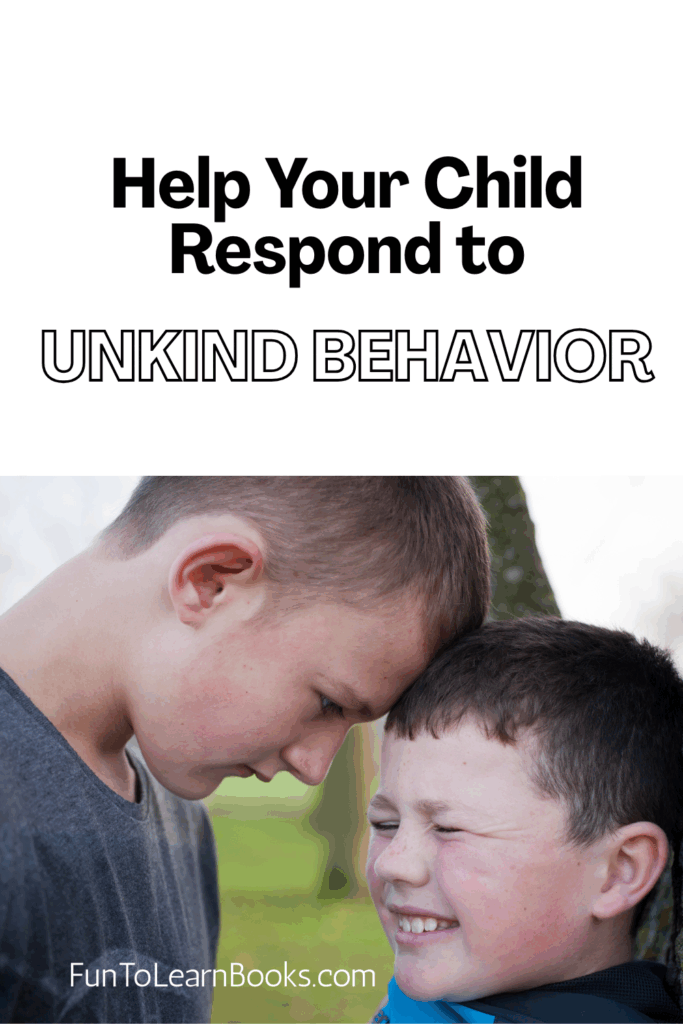Unkindness hurts. Whether it comes from a sibling, friend, or stranger, it can leave kids feeling confused and upset. But we can teach our children to respond with strength and compassion—even when others don’t. Here’s how.
Teach Empathy Through Observation
A powerful example of empathy comes from a simple experiment that’s been repeated on social media. A boy sits between his parents. His mom opens a gift to reveal one cookie. His dad opens his box and finds nothing. The boy opens his and discovers two cookies. He pauses, looks at his dad’s face, then gives one of his cookies to him.
This moment teaches children that kindness begins with empathy—noticing how others might feel. We can help kids develop this skill by encouraging them to:
- Watch facial expressions closely.
- Ask themselves, “How might this person be feeling?”
- Consider how their actions could impact someone else.
Explain That Kindness Is a Choice
Kids often think fairness means keeping what’s theirs. But the cookie-sharing boy reminds us that kindness means putting others first. He could have celebrated his extra cookie. Instead, he chose to care about someone else’s feelings.
Help your child understand:
Kindness isn’t just about being nice. It’s about choosing to give of our time or possessions to someone—even when we don’t have to.
Highlight the Joy of Giving
Sometimes kids (and adults) believe that giving will leave them with less—less time, less money, or fewer cookies. But research and real-life experiences show the opposite: Kindness increases happiness.
After giving away one of his cookies, the boy in the video smiled and enjoyed the remaining cookie even more. The act of sharing made him feel good.
Ask your child:
- “How did you feel the last time you were kind to someone?”
- “Did helping them make you feel happier too?”
Help Them Understand Others’ Behavior
Not everyone is kind. But that doesn’t mean they’re trying to be mean. Some people are unkind because they’re still learning—or because they’re hurting.
Tell your child:
When someone is unkind, it usually means they’re having a hard time themselves.
You can share this story: A man had a rude waitress. Instead of being unkind in return, he left her a $100 tip. She cried and explained how much she was struggling. His kindness made both of them feel better.
Encourage Them to Choose Kindness Anyway
When someone is mean, kids feel tempted to be mean back. But as parents, we can offer a better way:
- Pause and think.
- Consider how the other person might be feeling.
- Respond with kindness—not because the other person deserves it, but because it’s the kind of person they want to be.
Let your child know:
You always have a choice. Choose to be kind—even when it’s hard.
Encourage Your Child to Be Assertive
Being kind doesn’t mean your child can’t be assertive or set and enforce boundaries. Have your child use this formula with friends and family members:
- I feel (I was angry…)
- when you (when you didn’t share/made fun of me/ignored me)
- and I need (and I need you to share/support me/include me next time)
If the unkind person doesn’t respond to your child’s assertiveness, setting a boundary is appropriate.
“Because you didn’t respect my request to…I won’t be able to…If you are ready to respect my need for…please let me know.”
Conclusion:
Responding to unkindness with kindness is one of the most powerful things your child can learn. For more teaching helps on unkindness and responding to teasing, check out these lessons in Training Aliens Level 2. Be sure to read the rest of the articles in the 10 Days of Teaching Social & Emotional Skills series.


